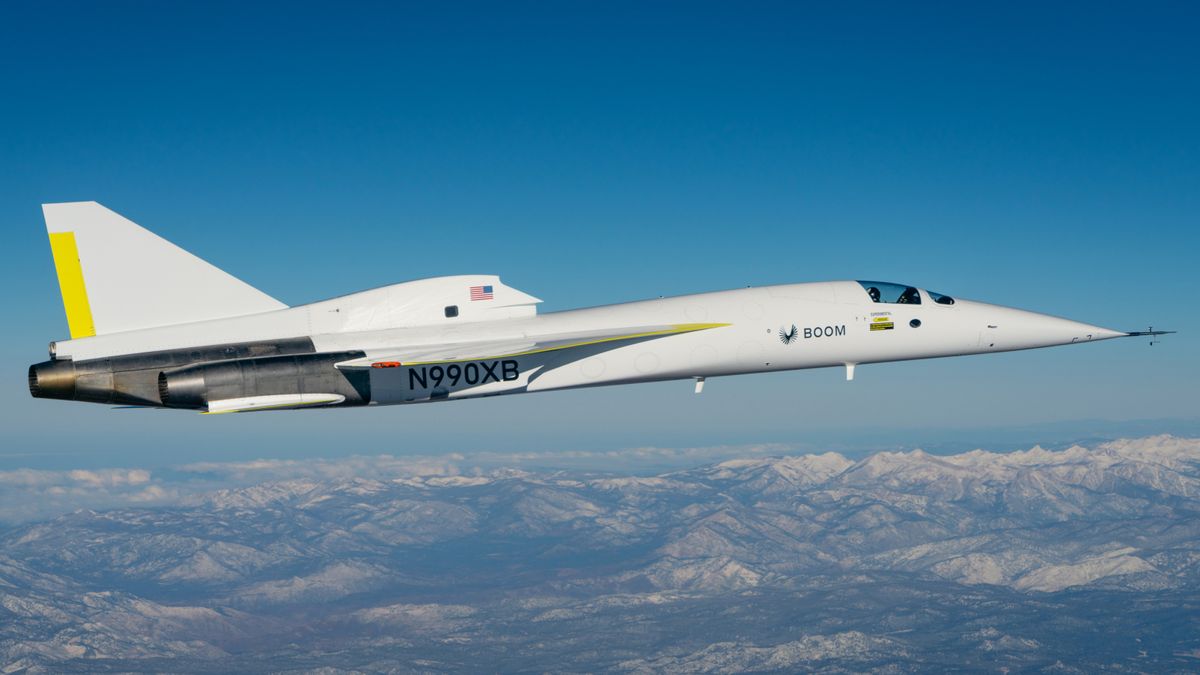Boom Supersonic has set a new speed record for its XB-1 prototype aircraft while confirming the stability of its design at high speeds for subsonic flight. The successful test puts us one step closer to seeing the return of commercial supersonic flights — 21 years after Concorde retired.
On Nov. 5, the XB-1 hit 629 mph (1,012 km/hr) for the first time — equivalent to Mach 0.82, where Mach 1.0 is the speed of sound. Marking its seventh test flight, this 55-minute mission also reached a new flight ceiling of 23,015 feet (7,015 meters) and confirmed the safety of its cockpit pressurization systems.
Eleven days later, the XB-1 completed its eighth test flight, a 54-minute run in which it carried out sustained Mach 0.8 operations without the assistance of its stability augmentation system.
This automated system typically helps keep the XB-1 stable during flights, similar to the fly-by-wire electronic stabilization systems used in modern fighter aircraft. Boom Supersonic wanted to demonstrate that the XB-1 is not entirely dependent on its stability augmentation system to stay in the air and can be manually operated at high speeds safely, the firm stated.
The aircraft has been in development for eight years and completed its first test flight in l March 2024 – which lasted just 12 minutes.
Other recent milestones include successful “flutter” tests at high speed, which prove the structure of the aircraft is not susceptible to destructive vibrations caused by airflow at high speeds, and the first successful in-flight use of its landing gear.
Boom Supersonic aims to complete 10 subsonic flights before pushing ahead with supersonic tests by the start of 2025.
“XB-1 continues to perform at progressively faster speeds and higher altitudes, expanding the flight envelope gradually to prepare the aircraft and team for breaking the sound barrier at Mach 1,” Boom Supersonic representatives said in a statement.
The XB-1 is a demonstrator craft, intended to make a case for the company’s technology to one day be used in commercial operations. These test flights are stress-testing Boom Supersonic’s in-house carbon fiber composite blends for airframes, as well as its custom engine intakes, which help traditional turbojet engines accelerate up to supersonic speeds more efficiently.
The XB-1 tests will feed directly into the creation of the Boom Overture, a proposed supersonic passenger aircraft capable of traveling as fast as Mach 1.7 — or 1,304 mph (2,099 km/h). This is nearly as fast as the Concorde and would enable passengers to travel from London to New York or Newark in approximately 3 hours and 30 minutes.


